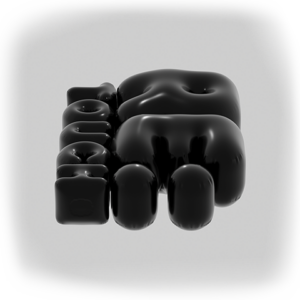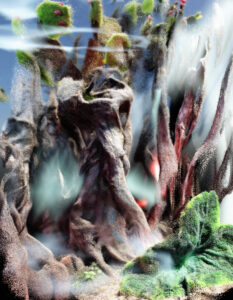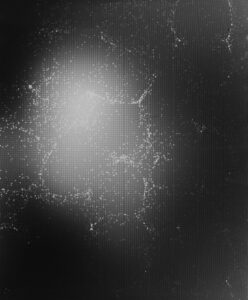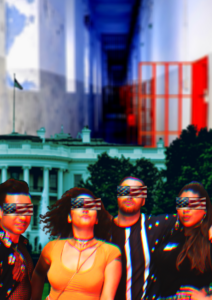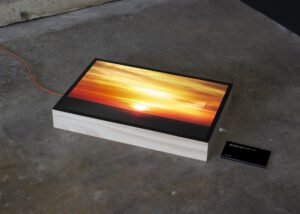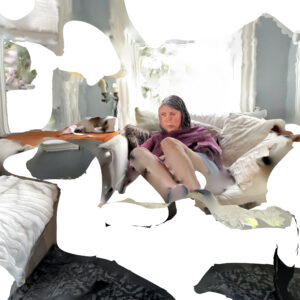Winners
First Prize
Character Coding
by Gabriella Achadinha
Statement of the Jury
The work “Character Coding” by Gabriella Achadinha stood out to the jury because it deals accurately and formally aesthetically with the current usage of smartphone photography in the context of the internet and social media. Within a single long strip of images, the artist arranges diverse visual material into a collage and thus already determines the mode of reception: scrolling is encouraged. Screenshots of smartphone lock screens or WhatsApp conversations are superimposed with text and digital drawings. Crudely cut-out found images from the web are juxtaposed with personal photographs, fragments of advertisements appear, interrupted by news headlines and Google search entries. The work employs various methods of citing, copying, and repeating, symptomatic of our digital sharing culture in both the artistic and pop cultural spheres.
Thematically, “Character Coding” deals with female stereotypes, toxic masculinity, and the harassment of individuals perceived as female in online spaces. The work therefore also questions so-called internet phenomena such as hate speech and comments, as well as the current state of net feminism and the male gaze in general.
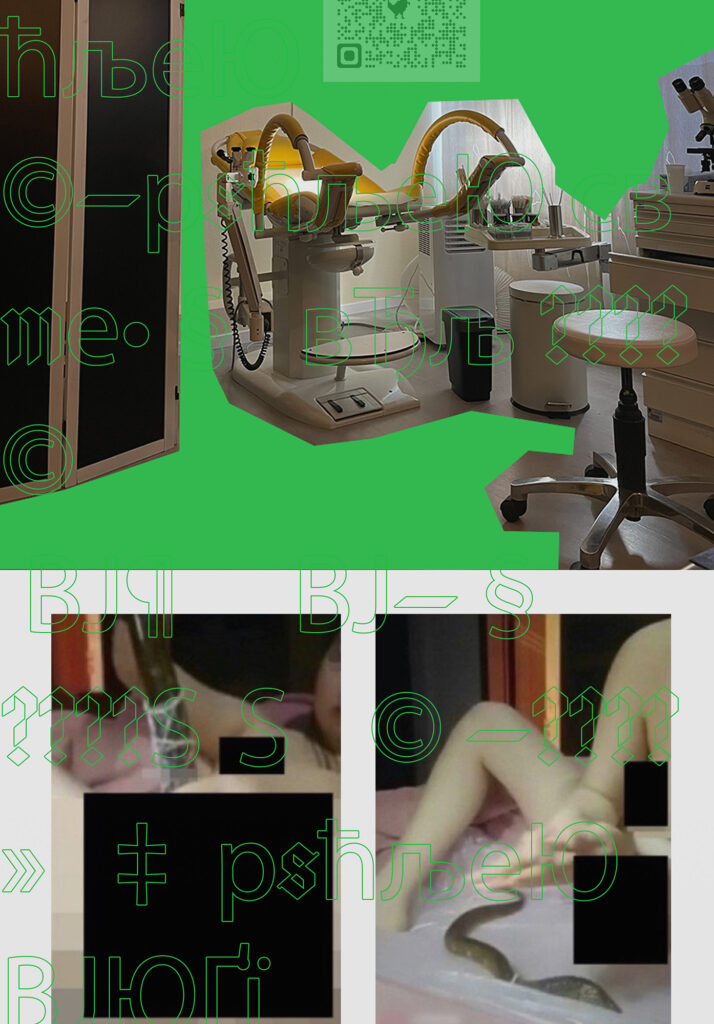
Detail of the artwork
Statement of the Jury
The work “Character Coding” by Gabriella Achadinha stood out to the jury because it deals accurately and formally aesthetically with the current usage of smartphone photography in the context of the internet and social media. Within a single long strip of images, the artist arranges diverse visual material into a collage and thus already determines the mode of reception: scrolling is encouraged. Screenshots of smartphone lock screens or WhatsApp conversations are superimposed with text and digital drawings. Crudely cut-out found images from the web are juxtaposed with personal photographs, fragments of advertisements appear, interrupted by news headlines and Google search entries. The work employs various methods of citing, copying, and repeating, symptomatic of our digital sharing culture in both the artistic and pop cultural spheres.
Thematically, “Character Coding” deals with female stereotypes, toxic masculinity, and the harassment of individuals perceived as female in online spaces. The work therefore also questions so-called internet phenomena such as hate speech and comments, as well as the current state of net feminism and the male gaze in general.
Second Prize
Sedimentary Clouds
by Maryam Ghasemi
Statement of the Jury
Maryam Ghasemi’s series “Sedimentary Clouds” impressed the jury in its simple and effective use of glitching and its generative potential. Her works show assembled collages of fragmented interiors. They deal with the condition of being part of the Iranian diaspora and the ubiquitous screen-glitch that lays the foundation of familial and relational love for everybody loving long distance in the 21st century. In assembling these, at first gaze, bland and fragmented interiors through screenshots of video calls, Ghasemi emphasizes the mundanity and the deexeptionalization of displacement. Displacement is an increasingly ubiquitous experience – hyperobjects like global warming and fossil resource scarcity will ever increase this condition throughout the upcoming nomad century. While movement worldwide is still framed as exceptional, displacement emerging from crisis after crisis—environmental disasters to political instability, economic insecurity to outright war, global pandemic to the uneven effects of climate catastrophe—it is clear that, just as “crisis” is becoming the norm, so too is displacement. Maryam Ghasemi’s works have given a visual language to this and monumentalize the poetics of polarity – the simultaneous presence and absence through online connections – without tapping into pathetic self-exotification or auto-orientalism. Three months into the anti-government protests after the murder of Mahsa Amini and 40 years into the dictatorship in Iran, Ghasemi’s work avoids sensationalism and instead shows the subtleties and ordinariness of displacement in a world of ongoing crises.
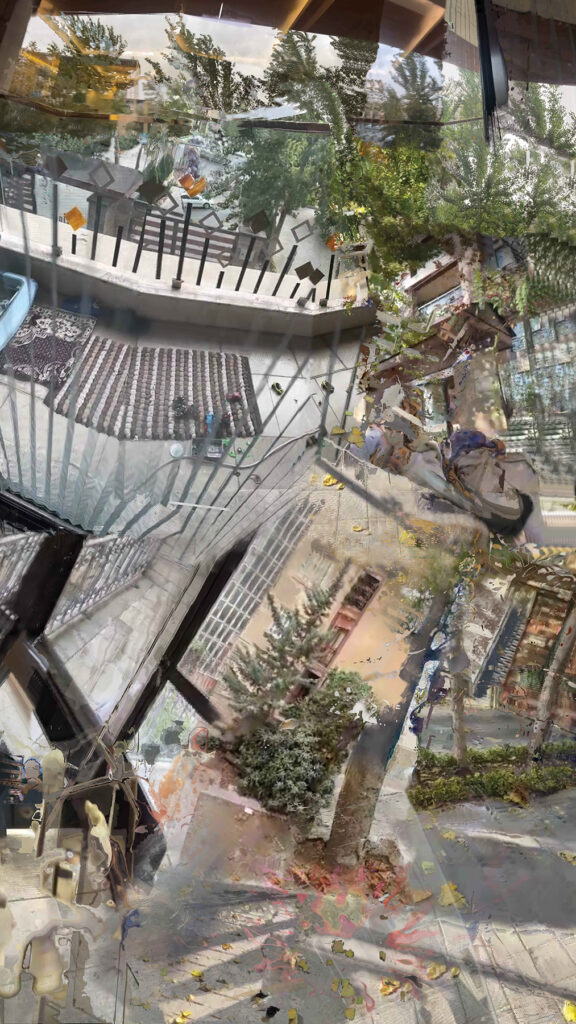
Part of the photo series
Statement of the Jury
Maryam Ghasemi’s series “Sedimentary Clouds” impressed the jury in its simple and effective use of glitching and its generative potential. Her works show assembled collages of fragmented interiors. They deal with the condition of being part of the Iranian diaspora and the ubiquitous screen-glitch that lays the foundation of familial and relational love for everybody loving long distance in the 21st century. In assembling these, at first gaze, bland and fragmented interiors through screenshots of video calls, Ghasemi emphasizes the mundanity and the deexeptionalization of displacement. Displacement is an increasingly ubiquitous experience – hyperobjects like global warming and fossil resource scarcity will ever increase this condition throughout the upcoming nomad century. While movement worldwide is still framed as exceptional, displacement emerging from crisis after crisis—environmental disasters to political instability, economic insecurity to outright war, global pandemic to the uneven effects of climate catastrophe—it is clear that, just as “crisis” is becoming the norm, so too is displacement. Maryam Ghasemi’s works have given a visual language to this and monumentalize the poetics of polarity – the simultaneous presence and absence through online connections – without tapping into pathetic self-exotification or auto-orientalism. Three months into the anti-government protests after the murder of Mahsa Amin and 40 years into the dictatorship in Iran, Ghasemi’s work avoids sensationalism and instead shows the subtleties and ordinariness of displacement in a world of ongoing crises.
Third Prize
The Wooden Beaver Archive
by Michael Borowski
Statement of the Jury
The series “The Wooden Beaver Archive” by US artist Michael Borowski convinced the jury as an unusual as well as subtle and formally independent contribution to dealing with imaging AI programmes. Borowski used prompts to generate images of bathhouses, saunas and spas that were built in the USA in the late 19th century in places with mineral springs. These facilities offered not least the opportunity to act out (unaccepted) homoerotic or queer desire. The images generated by the AI programme often show people in fragmented or distorted form, sometimes individual body parts cannot be clearly assigned. But these image errors provide their own aesthetic quality, and in this case it looks as if several people are embracing or literally intertwining with each other. Borowski produced negatives of these digital images, which then became the basis for salt prints. This is a photographic process from the early days of photography – popular precisely at the time when those bathhouses were also booming. Borowski has thus recreated historical images that do not exist in this form, in fact he has created a fictitious archive. With salt printing, he has chosen a process which, if not used perfectly, also results in distortions of the motifs. In this way, he has historicised the effects of the AI, too.
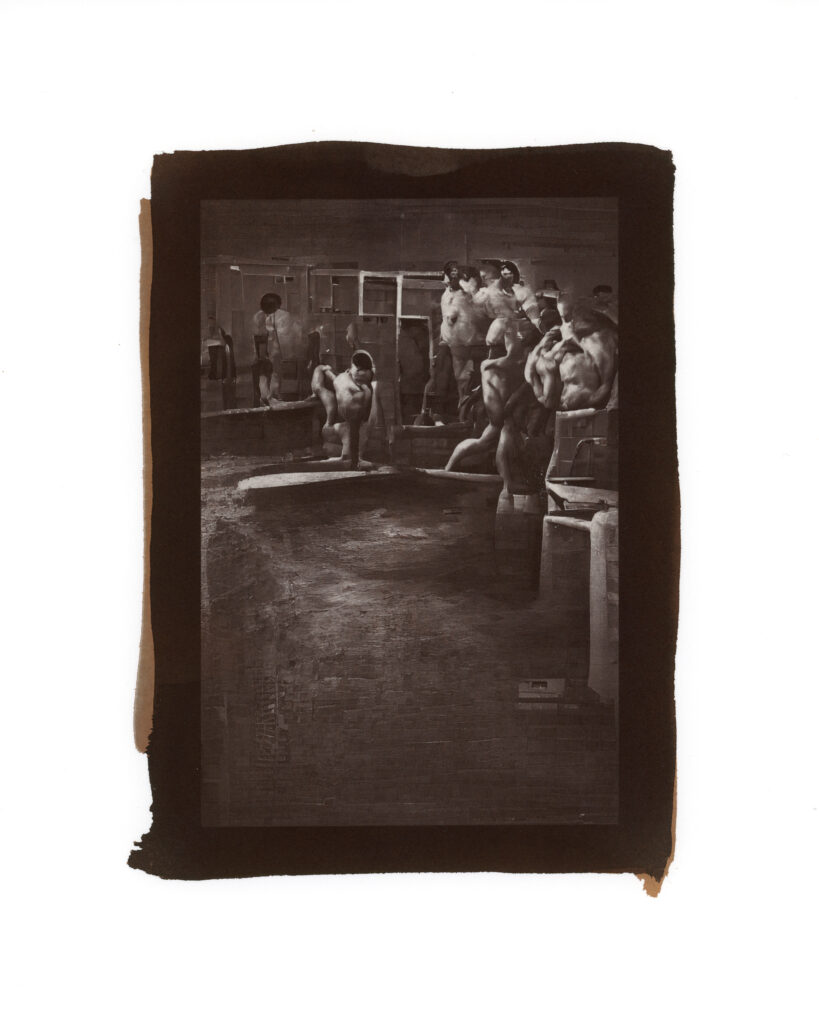
Part of the photo series
Statement of the Jury
The series “The Wooden Beaver Archive” by US artist Michael Borowski convinced the jury as an unusual as well as subtle and formally independent contribution to dealing with imaging AI programmes. Borowski used prompts to generate images of bathhouses, saunas and spas that were built in the USA in the late 19th century in places with mineral springs. These facilities offered not least the opportunity to act out (unaccepted) homoerotic or queer desire. The images generated by the AI programme often show people in fragmented or distorted form, sometimes individual body parts cannot be clearly assigned. But these image errors provide their own aesthetic quality, and in this case it looks as if several people are embracing or literally intertwining with each other. Borowski produced negatives of these digital images, which then became the basis for salt prints. This is a photographic process from the early days of photography – popular precisely at the time when those bathhouses were also booming. Borowski has thus recreated historical images that do not exist in this form, in fact he has created a fictitious archive. With salt printing, he has chosen a process which, if not used perfectly, also results in distortions of the motifs. In this way, he has historicised the effects of the AI, too.
